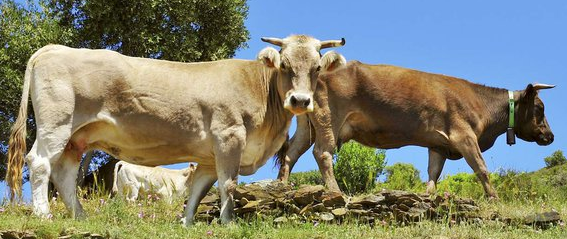Let's look into Andorra National Animal. Andorra, a small country located in the Pyrenees Mountains between France and Spain, is known for its beautiful landscapes and unique culture. One of the country's most iconic symbols is its national animal, which is a cattle. In this article, we'll take a closer look at the Andorra National Animal and explore its physical characteristics, habitat and distribution, behavior, conservation status, cultural significance, and more.
Physical Characteristics of Andorra National Animal
The Andorra National Animal is a cattle breed that is well-adapted to the mountainous terrain of the Pyrenees. It is a medium to large-sized animal, with a typical weight range of 600 to 1000 kilograms. Its coat color ranges from light to dark brown, and it has short, curved horns that are usually black or brown. The cattle's strong and muscular body makes it well-suited for life in the mountains.
Habitat and Distribution of Andorra National Animal
The Andorra National Animal is a native breed to the Pyrenees Mountains, and it can be found in both Andorra and the surrounding regions of France and Spain. These cattle are typically found in higher altitude regions, where they graze on mountain pastures during the warmer months and are moved to lower pastures during the winter. They are also known for their hardiness and adaptability to cold temperatures.
Behavior and Lifestyle of Andorra National Animal
The Andorra National Animal is a social animal, and they are often found in herds with other cattle. They are herbivorous and primarily feed on grasses, hay, and other vegetation. These cattle breed during the summer months, and females give birth to a single calf after a gestation period of around nine months. They are also known for their gentle nature and are often used for beef production and dairy farming.
Conservation Status and Threats to Andorra National Animal
The Andorra National Animal is not currently listed as a threatened species, but like many other breeds of cattle, it is facing various threats to its survival. One of the primary threats is the loss of natural habitat due to human activities such as deforestation, urbanization, and infrastructure development. Additionally, changes in climate patterns and increased disease risks pose potential threats to the Andorra National Animal.
Andorra National Animal in Culture and Society
The Andorra National Animal holds significant cultural importance in Andorran society, and it has been used as a symbol of the country for many years. These cattle are also an essential part of the country's agricultural industry, providing milk and meat for local consumption and export. Additionally, they are often used in cultural festivals and celebrations, where they play a prominent role in traditional music, dancing, and dress.
Conclusion and Future Outlook for Andorra National Animal
Overall, the Andorra National Animal is a vital part of Andorran culture and an essential breed for the country's agricultural industry. However, with ongoing threats to their natural habitat and breeding, it is crucial to continue monitoring and conserving this breed. We must work together to protect this national animal so that future generations can enjoy its beauty and cultural significance.
References:
Animal Diversity Web. (n.d.). Bos taurus. Retrieved from https://animaldiversity.org/accounts/Bos_taurus/
Andorra Guide. (2021). Animals of Andorra. Retrieved from https://www.andorrainsiders.com/animals-of-andorra/
The Pyrenean Cattle: Andorra's National Animal. (2018). Visit Andorra. Retrieved from https://visitandorra.com/en/culture/the-pyrenean-cattle-andorras-national-animal/
In conclusion, the Andorra National Animal, also known as the Pyrenean Cattle, is a vital part of Andorran culture and plays an essential role in the country's agricultural industry. These cattle are well-suited for life in the mountainous regions of the Pyrenees and are known for their hardiness and adaptability to cold temperatures. However, they are facing various threats to their survival, including habitat loss and climate change. As such, it is crucial to continue monitoring and conserving this breed so that future generations can appreciate their beauty and cultural significance.
